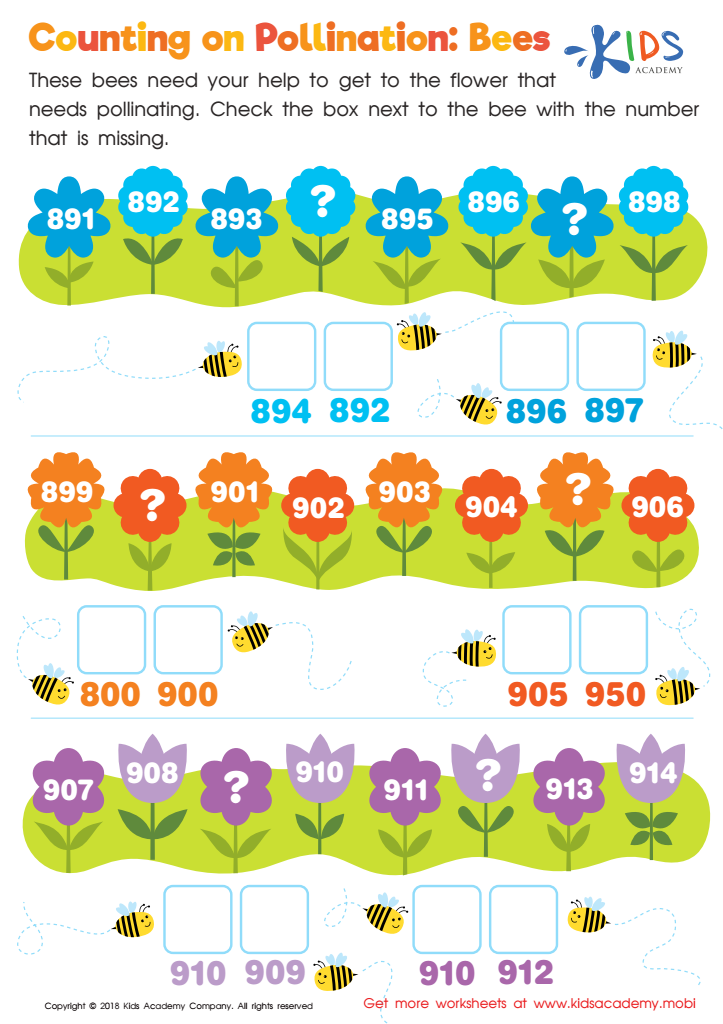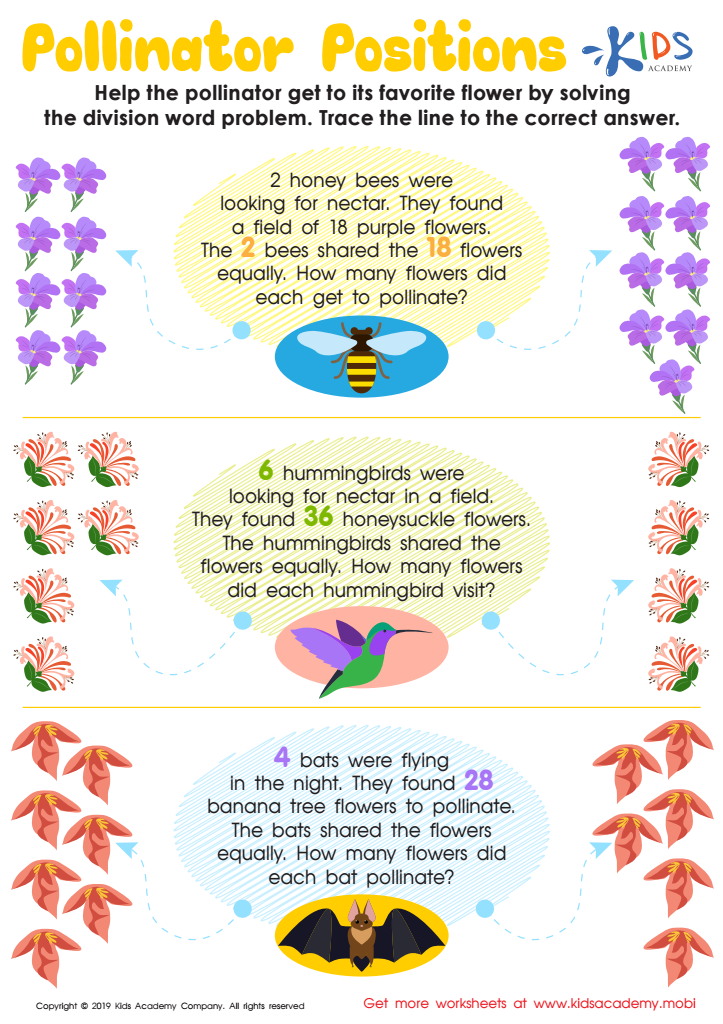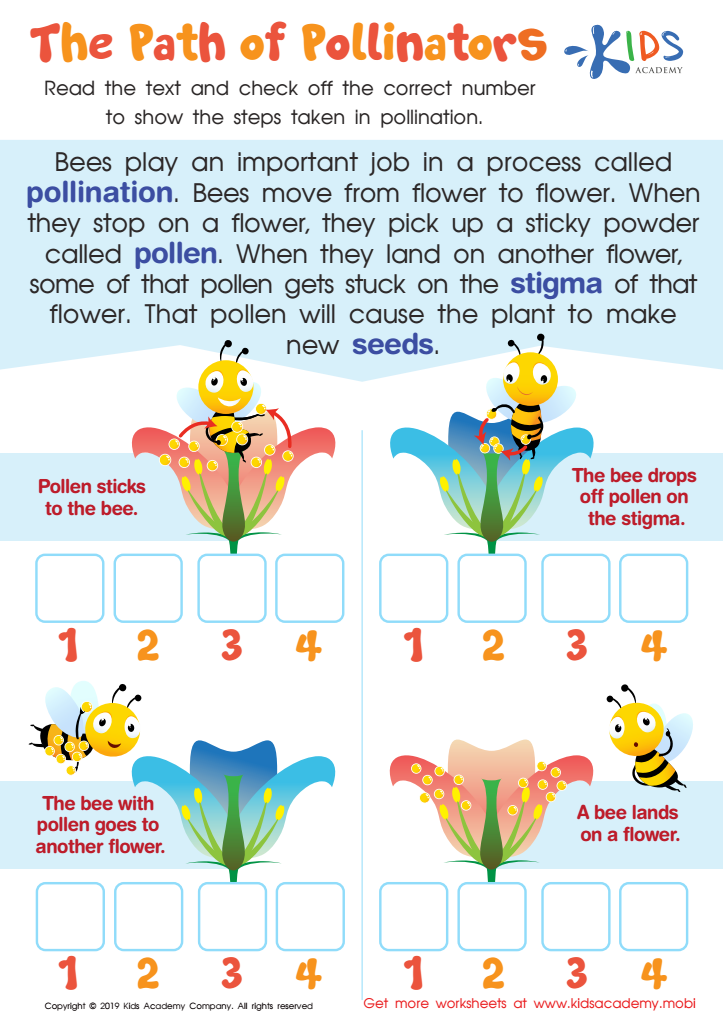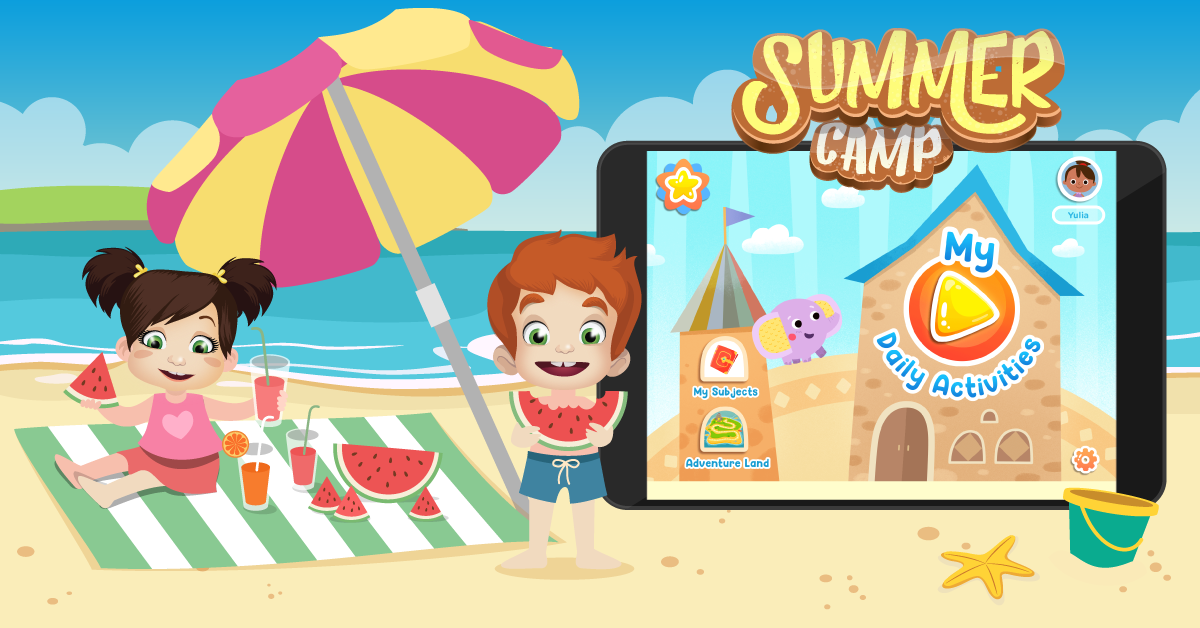Understanding pollination Normal Science Worksheets for Ages 7-9
3 filtered results
-
From - To
Discover the fascinating world of pollination with our "Understanding Pollination" Normal Science Worksheets, designed specifically for ages 7-9. These engaging and educational worksheets provide young learners with the opportunity to explore the critical role of pollinators in our ecosystem. Through fun activities and interactive content, children will gain insights into how plants reproduce, the importance of different pollinators, and the relationship between flowers and their pollinating agents. Perfect for classroom use or at-home learning, these worksheets offer a perfect blend of science education and creativity, fostering a love for nature and critical thinking skills. Unlock the wonders of science today!


Counting on Pollination: Bees Worksheet


Pollinator Positions Worksheet


The Path of Pollinators Worksheet
Understanding pollination is vital for parents and teachers to instill in children aged 7-9 because it connects them to the natural world and fosters curiosity about science. Pollination is a key process that sustains ecosystems and agriculture, influencing the food we eat and the health of our planet. By teaching children about how bees, butterflies, and other organisms contribute to the growth of fruits, vegetables, and flowers, we can encourage a sense of responsibility towards nature.
Additionally, engaging children in topics like pollination nurtures critical thinking and observation skills. Science literacy at this age lays the foundation for future learning. Parents and teachers can use hands-on activities, such as planting a garden or observing local pollinators, to make learning interactive and fun. This experiential learning helps students grasp concepts of biology and ecology while highlighting the importance of biodiversity for food security.
Moreover, understanding pollination aids in promoting environmental stewardship. As children become aware of the challenges pollinators face, such as habitat loss and climate change, they can develop a sense of advocacy. Overall, educating young learners about pollination fosters curiosity, responsibility, and a fundamental understanding of the interconnectedness of life on Earth.
 Assign to My Students
Assign to My Students




















